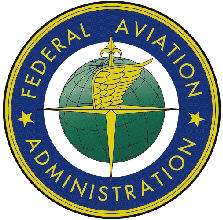Thu, Oct 20, 2005
 An agreement signed Thursday between
top American and Chinese aviation officials will enhance air safety
while reducing regulatory burdens and costs for the airlines and
aviation authorities of both countries. The Bilateral Aviation
Safety Agreement (BASA) between the Federal Aviation Administration
(FAA) and General Administration of Civil Aviation of China (CAAC)
will reduce duplicative oversight of each other's airlines while
opening the door to cooperation between the two countries in
aviation safety.
An agreement signed Thursday between
top American and Chinese aviation officials will enhance air safety
while reducing regulatory burdens and costs for the airlines and
aviation authorities of both countries. The Bilateral Aviation
Safety Agreement (BASA) between the Federal Aviation Administration
(FAA) and General Administration of Civil Aviation of China (CAAC)
will reduce duplicative oversight of each other's airlines while
opening the door to cooperation between the two countries in
aviation safety.
Secretary of Transportation Norman Y. Mineta and over 200
international aviation leaders witnessed the signing of the
agreement by FAA Administrator Marion C. Blakey and CAAC Minister
Yang YuanYuan at the FAA's annual International Aviation Safety
Forum.
The agreement will reduce regulatory burdens for the airlines
and improve coordination between U.S. and Chinese flight safety
programs, leading to streamlined procedures that raise safety
standards while making the best use of both countries' safety
management resources.
"It is imperative that we do everything possible to facilitate
growth in both countries' aviation systems so that both economies
can prosper at their own pace, without the burden of overlapping
bureaucracy getting in the way," Secretary Mineta said.
"This agreement will provide a foundation for maintenance,
airworthiness, operations and the environment," Blakey said. "We're
creating synergy: for aviation, for safety, for business. It's good
for the People's Republic of China. It's good for the United
States."

According to the CAAC, traffic by Chinese air carriers has grown
at an average of 14 percent annually since 1978 and is expected to
continue at this rate for decades to come. Economists estimate that
over the next several years, the Chinese aviation system is
expected to grow to be the second largest aviation system in the
world behind the United States. Recognizing this tremendous growth
rate, the FAA nine years ago began a cooperative effort with the
CAAC in the areas of flight standards, air traffic management and
airports, as well as aircraft operations, maintenance and
certification. The FAA and CAAC have planned more than 70
cooperative exchange activities in 2005 in all fields of aviation
safety.
More News
Known Traffic With respect to ATC clearances, means aircraft whose altitude, position, and intentions are known to ATC.>[...]
Aero Linx: Aviation Suppliers Association (ASA) Established February 25, 1993, the Aviation Suppliers Association (ASA), based in Washington, D.C., is a not-for-profit association,>[...]
Abeam An aircraft is “abeam” a fix, point, or object when that fix, point, or object is approximately 90 degrees to the right or left of the aircraft track. Abeam indic>[...]
Aero Linx: The Air Charter Safety Alliance The group, called the Air Charter Safety Alliance, will raise awareness of illegal charter flights among potential customers, charter bro>[...]
“For months, ALPA has been sounding the alarm on the ongoing efforts by some aircraft manufacturers to remove pilots from the flight deck and replace them with automation. To>[...]
 ANN's Daily Aero-Term (06.10.24): Known Traffic
ANN's Daily Aero-Term (06.10.24): Known Traffic ANN's Daily Aero-Linx (06.10.24)
ANN's Daily Aero-Linx (06.10.24) ANN's Daily Aero-Term (06.11.24): Abeam
ANN's Daily Aero-Term (06.11.24): Abeam ANN's Daily Aero-Linx (06.11.24)
ANN's Daily Aero-Linx (06.11.24) Aero-News: Quote of the Day (06.11.24)
Aero-News: Quote of the Day (06.11.24)




